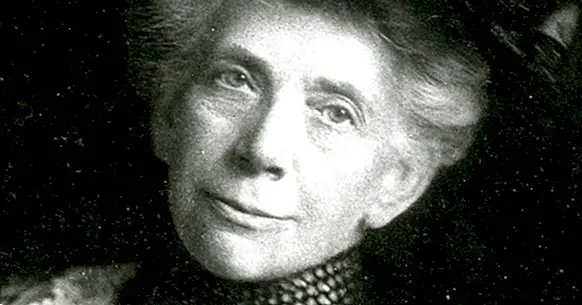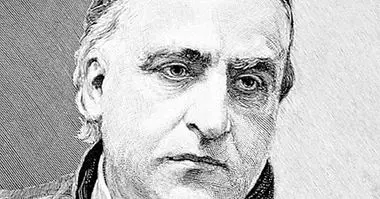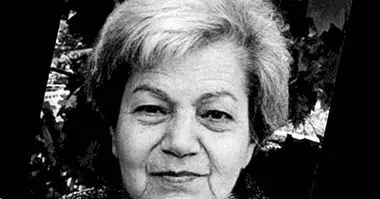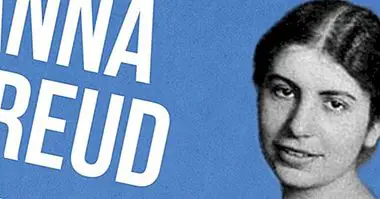Christine Ladd-Franklin: biography of this experimental psychologist
Christine Ladd-Franklin (1847-1930) was a mathematician, psychologist and feminist suffragist who fought to eliminate the barriers that prevented women from accessing universities in the first half of the 20th century. Among other things he worked as a teacher in logic and mathematics, and later developed a theory of color vision that significantly impacted modern psychology.
Then we'll see a biography of Christine Ladd-Franklin , a psychologist who not only developed important scientific knowledge, but also fought to guarantee access and participation of women in universities.
- Related article: "History of Psychology: authors and main theories"
Christine Ladd-Franklin: biography of this American psychologist
Christine Ladd-Franklin was born on December 1, 1847, in Connecticut, United States. She was the eldest of two brothers, children of Eliphalet and Augusta Ladd. ** Her mother was a suffrage activist ** who died when Christine was young, with which Ladd-Franklin ended up moving with her aunt and paternal grandmother to New Hampshire.
In 1866 he began studying at Vassar College (school for women). However, he had to leave his studies very soon due to economic situations. He took them back two years later thanks to his own savings and after receiving family financial support.
From the beginning, Christine Ladd-Franklin he had a great motivation for research and science . At Vassar College he was formed together with Maria Mitchell, a well-known American astronomer who already had an important international recognition.
For example, she is the first woman to have discovered a new comet through a telescope and is also the first woman to be part of the American Academy of Arts and Science, as well as the American Association of Scientific Advances. Mitchell was also a woman suffragist, who greatly inspired Ladd-Franklin in her professional development and as a scientific woman.
Christine Ladd-Franklin was especially interested in physics, but faced with the difficulties of pursuing a career as a researcher in that area, he moved towards mathematics . And then, towards experimental research in psychology and physiology.
Ladd-Franklin before the exclusion of women in the academy
In addition to being recognized as an important psychologist, Christine Ladd-Franklin is remembered for having firmly opposed the policies of women's exclusion in the new American universities, as well as those who defended those policies.
For example, in 1876 he wrote a letter to renowned mathematician James J. Sylvester at the newly formed John Hopkins University to directly question if being a woman was a logical and sufficient reason to deny her access to higher education .
At the same time, he sent a request for admission with a scholarship to said university, signed with the name of "C. Ladd ", and along with an excellent academic record. It was admitted, until the committee discovered that the letter "C" was from "Christine", which was about to cancel their admission. At this time Sylvester intervened and Ladd-Franklin was finally accepted as a full-time student, although with "special" treatment.
Training in logic and mathematics
James J. Sylvester was a well-known academic; among other things, he is credited with coining the terms "matrix" and the theory of algebraic invariants. Along with him, Christine Ladd-Franklin was trained in mathematics. On the other hand, he was formed in symbolic logic with Charles S. Peirce , one of the philosophers who founded pragmatism. Christine Ladd-Franklin who became the first American woman to receive formal education with such scientists.
He finished his doctoral training in logic and mathematics in the year of 1882, with a thesis that was later included in one of Pierce's most important volumes on logic and syllogisms. However, and under the argument that coeducation was not typical of civilized communities, his doctoral degree was not officially recognized by the university . They spent 44 years, and on the 50th anniversary of Johns Hopkins University, when Ladd-Franklin was 79 years old, he was finally recognized with that academic degree.
However, she worked as a professor at the same university during the first years of 1900, which added more difficulties, because she decided to marry and start a family together with the mathematician Fabian Franklin (from whom he took the surname).In this context, married women had even more problems to access and sustain official academic activities.
Likewise, Christine Ladd-Franklin protested in an important way before the refusal of British psychologist Edward Titchener to admit women to the Society of Experimental Psychologists that he had founded as an alternative option to meetings of the American Psychological Association (APA). Where, in fact, Christine Ladd-Franklin did participate regularly.
- Maybe you're interested: "Edward Titchener and structuralist psychology"
Development in Experimental Psychology
Christine Ladd-Franklin moved to Germany along with Fabian Franklin, where she developed her research in color vision. In the beginning He worked in the Göttingen laboratory with Georg Elias Müller (one of the founders of experimental psychology). Later he was in Berlin, in a laboratory together with Hermann von Helmholtz, physicist and philosopher pioneer in physiological psychology.
After working with them and with other experimental psychologists, Christine Ladd-Franklin developed a theory of her own about how our photoreceptors act in connection with the chemical functioning of the nervous system, allowing us to perceive different colors.
Theory of color vision of Ladd-Franklin
During the nineteenth century there were two main theories on color vision, whose validity continues, at least in part, to this day. On the one hand, in 1803, the English scientist Thomas Young had proposed that our retina is prepared to perceive three "primary colors": red, green, blue or violet. On the other hand, the German physiologist Ewald Hering had proposed that there are three pairs of such colors: red-green, yellow-blue and black and white; Y He studied how the photosensitive reaction of nerves ensures that we can perceive them .
What Ladd-Franklin proposed is that there is rather a process consisting of Three stages in the development of color vision . Black and white vision is the most primitive of the stages, because it can occur under very little illumination. Then, the white color is what allows the differentiation between blue and yellow, and the latter, yellow, allows the differentiated vision of red-green.
In very broad strokes, Christine Ladd-Franklin managed to unite the two great theoretical proposals of color vision in an evolutionary photochemical hypothesis. Specifically described the process of action of ether waves on the retina ; understood as one of the main generators of light sensations.
His theory was very well received in the scientific context of the early twentieth century, and its influence has remained to this day, especially the emphasis he placed on the evolutionary factor of our color vision.
Bibliographic references:
- Vaughn, K. (2010). Profile Christine Ladd-Franklin. Retrieved June 26, 2018. Available at //www.feministvoices.com/christine-ladd-franklin/.
- Vassar Encyclopedia. (2008). Christine Ladd-Franklin. Retrieved June 26, 2018. Available at // vcencyclopedia.vassar.edu/alumni/christine-ladd-franklin.html.
- Dauder Garcia, S. (2005). Psychology and feminism Forgotten history of women pioneers in psychology. Narcea: Madrid.



















